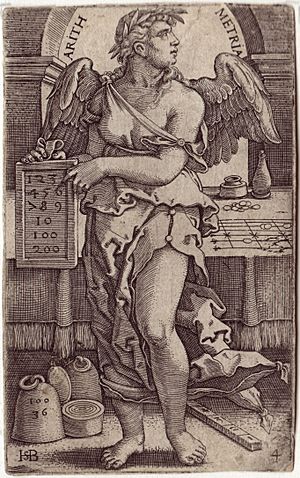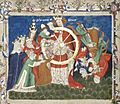Personification facts for kids


Personification is a figure of speech where non-living objects are described to seem like people.
In the arts, personification means representing a non-human thing as if it were human. Personification gives human traits and qualities, such as emotions, desires, sensations, gestures and speech, often by way of a metaphor.
Personification is much used in visual arts. Examples in writing are "the leaves waved in the wind", "the ocean heaved a sigh" or "the Sun smiled at us". In easy language personification is just giving an example of a living being for a non-living thing. "The wind shouted". In these examples, the nonhuman subjects are given human characteristics.
Another commonly used personification is found in stories where animals and legendary creatures are attributed labels for recognition. This is called anthropomorphism.
Related pages
Images for kids
-
Set of porcelain figures of personifications of the four continents, German, c. 1775, from left: Asia, Europe, Africa, America. Of these, Africa has retained her classical attributes. Formerly James Hazen Hyde collection.
-
Jean Goujon, The Four Seasons, reliefs on the Hôtel Carnavalet, Paris, c. 1550s.
-
Constance and Fortitude in Vienna. Early modern statues with classical iconography.
-
The "Queen of Fortune", helped by four other personifications, turns her wheel. English miniature for John Lydgate's Troy Book, 15th-century.
-
Two of the triumphal cars, carrying Chastity and Love, from a lavish illuminated manuscript (early 16th century) of Petrach's Triomphi
-
Sculptures Trade (male) and Tolerance (female) in Brno
-
Cartoon on the Entente Cordiale from Punch by John Bernard Partridge, 1904; John Bull stalks off with a defiant Marianne and turns his back on the Kaiser, who pretends not to care.
See also
 In Spanish: Personificación para niños
In Spanish: Personificación para niños








